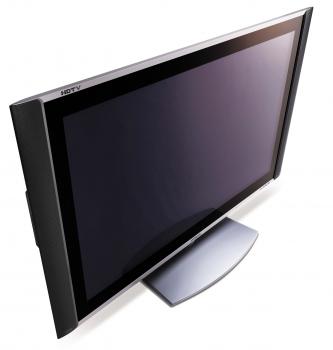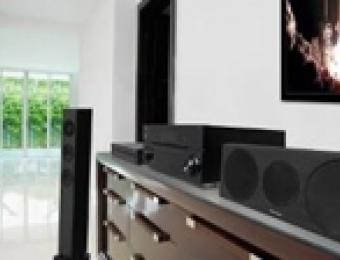HDTV itself stands for 'High-Definition Television' - and may refer to either a high definition television broadcast, or to a television designed to display a high quality, high definition picture. These types of televisions are normally one of three different types: plasma, LCD or LED. Each type has its own advantages and shortcomings.

How are they used?
HDTV is commonly used to display HD images from a high-definition video source. Some of these sources include DVD and Blu-ray players, video game systems, computers, high definition digital TV broadcasts and IPTV streams. HDTVs provide the means with which to enjoy these image sources at the best possible quality, either as a part of a home theatre setup, or anywhere else in your home.
Display technologies - Plasma, LCD or LED?
HDTV displays normally use either plasma, LCD or LED technology. Below is a quick summary of each:
Plasma TVs
These TVs work using a large array of gas filled cells. Each pixel contains one red, one green and one blue cell - when a charge is applied through the gas in a cell, it undergoes a physical reaction to produce light of a particular colour.
Plasma displays are generally bright and offer excellent colour reproduction, outstanding contrast and a good viewing angle. Plasma TVs also use considerably more energy than LCD and LED TVs, and are best suited for larger display sizes (particularly those greater than 50 inches). Plasma TVs use a glass screen, which may cause the image quality to suffer as a result of reflected light.
LCD TVs
LCD stands for 'Liquid Crystal Display'. These televisions work by projecting white light onto the back of the display, then use millions of tiny shutters to selectively filter light, only allowing certain aspects or colours to be displayed.
These televisions are popular due to their affordability, relative efficiency and good image quality. Beyond the size and resolution, the image quality on an LCD display depends on its viewing angle, response time (how often each pixel is refreshed) and contrast ratio, which affects how well the display is able to display darker shades.
LED TVs
These TVs are effectively the same as LCD TVs, except for the fact that they use LED globes to backlight the screen. LED TVs come in three varieties; edge-lit, full array and RGB dynamic. Edge-lit LED TVs only light the screen from the edges, and the brightness may subtly differ in different parts of the screen as a result. Full array LED TVs feature an array of LEDs behind the screen to provide uniform brightness. RGB dynamic ones offer the ability to individually emphasise colour and brightness in different parts of the screen, thereby offering better colour reproduction, contrast and overall brightness.
Resolutions and display standards
Another way that HDTVs differ is in terms of resolution. The 'resolution' of the TV determines how many pixels the display contains, which in turn dictates how much detail can be shown. Different video sources use different resolutions, but as a rule a source isn't considered to be 'high definition' unless it's at least 720p (720 lines of pixels, displayed progressively). Most HDTVs can display video from standard definition (SD) sources too.
As a general rule of thumb, if you're buying a TV it's a good idea to look for the highest possible resolution (currently 1080p, which is also referred to as 'full HD') - this will help to guarantee that you get the best possible picture from any video source you're able to plug into it.
Different sizes
Because HDTVs are thinner and lighter than older style CRT televisions, and thanks to advances in the display technologies used to make them, HDTVs are substantially bigger than the TVs of yesteryear. The size of an HDTV is measured diagonally across the TV's display area, and is traditionally expressed in inches. HDTVs can range from anywhere between about 22" all the way up to 200" - of course, for anything higher than 50" you're likely to pay far more.
Buying the biggest TV you can afford isn't always the best option. The size of the TV you buy should be suitable for the distance at which you intend to sit from it. Even if it is displaying a full HD 1080p image, if your TV's too big and you're sitting too close to it the image will be pixellated. If your television's too small, on the other hand, or if you're sitting too far away from it, then you're likely to be missing out on some of the detail it offers. Find out more about how to strike a balance between size, resolution and viewing distance.
What are the alternatives to HDTV?
You don't need an HDTV simply to watch digital television. If you'd like to watch digital TV on your old standard definition CRT television, then a digital set top box will allow you to do so.
Another alternative to HDTV is to use a projector. Projectors are also able to display high-definition video, and are particularly popular with people setting up large, immersive home cinema systems. Generally speaking, projectors are a very cost effective alternative to huge HDTVs.





